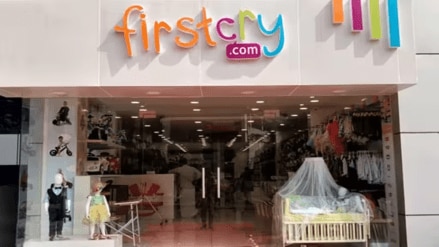The increasing use of the internet for shopping has opened up opportunities for online-first startups like FirstCry which cater to the baby and childcare market. FirstCry, backed by SoftBank has just refiled its IPO papers and plans to raise ₹1,816 crore through a fresh issue of shares, with existing investors planning to sell 54 million shares.
Redseer forecasts the market for childcare products will grow at an annualised 14% to $60 billion or ₹ 4.8 trillion by 2027 from around $31 billion or Rs 2.5 trillion in 2022. The average spend of ₹ 8,000 per child in India is expected to double by 2027.
“New age parents do not have the same support system as the earlier generations. Many are turning to friends and online communities to discover the best products. This has created opportunities for new digitally savvy brands,” Harmanpreet Singh, co-founder and managing partner, Prath Ventures told Fe. FirstCry’s DRHP says customers who interacted with its parenting community purchased products two times more frequently than those who did not interact.
Little wonder, the segment has attracted so many players. Within consumables, there is SuperBottoms offering cloth diapers and R for Rabbit which sells diapers, wipes, baby gear, etc and within nutrition, there are Slurrp Farm, Little Joys, Nutrizoe, Babyorgano, among others. Under apparel and footwear, there is Aretto in footwear and Hopscotch and Alia Bhatt-backed Ed-A-Mamma in apparel. According to Tracxn, companies in the Mom and Baby Care space have received a total funding of $5.75 billion so far. Further, just like FirstCry, many companies including Healofy, Mylo, Imumz and a few others have taken a community-building approach.
While there is a boom in the direct-to-consumer (D2C) segment, the scope for profitability is higher for e-commerce marketplaces (aggregators). “E-commerce marketplaces have greater reach, lower marketing costs and act as a one-stop shop for all your needs. However, some D2C brands have been able to combat this by providing exclusive offers, discounts, and loyalty programs through their own websites,” Milan Sharma, founder and MD, 35North Ventures said.
There is also a move towards premiumisation. As FirstCry’s DRHP reads, the growing number of urban nuclear families with both parents being formally employed is driving the adoption and premiumisation of hard goods and toys, supported by growing awareness through social media. This, analysts say, is a huge opportunity for D2C brands, which are currently being tapped into mostly by global brands like Chicco and Sebamed.
The challenge of short lifetime value
Despite the large number of babies, it’s not always an easy ride for online-first brands. “The biggest challenge for an early childhood-focused brand remains the short lifetime value of a customer,” Singh pointed out. Mamaearth, for instance, started as a baby/early child-focused brand but realised fast the market was not very large.
Further, in categories like apparel and shoes, managing inventory with so many sizes has been a challenge. “Most parents tend to spend less on something which the child will outgrow in a matter of months (toys, shoes, clothes), though, this is changing,” said an expert. With regards to creating an aggregator as a competition to FirstCry, Singh said, the ship has sailed and FirstCry has an unassailable lead.
But, even for FirstCry, an offline foray or the need to be a multi-channel retailer is high.
According to reports, a significant portion of the proceeds from its IPO will be used to open 200 more stores under its FirstCry and Babyhug brands. The company has more than 1,000 stores at present and an operational revenue ₹ 5,633 crore in the year ended March 31, 2023.
Even in a standardised category like diapers, the online penetration remains less than 20% and thus an offline foray for both D2C brands and aggregators is key to sustain. “Offline presence allows to capture a greater chunk of the market and gain a higher customer base. Also, omnichannel allows customers to transition seamlessly between both online and offline channels and promises greater brand visibility and brand awareness,” said Sharma.
